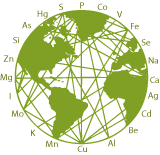Iron toxicity and Iron Overload
Iron toxicity from intentional or accidental ingestion is a common poisoning. The acute ingestion of iron is especially hazardous to children. Life-threatening toxicity is associated with pediatric ingestion of potent adult preparations, such as prenatal vitamins. Serious iron ingestion in adults is usually associated with suicide attempts.
Accidental ingestions are more common in children less than 6 years. In addition, iron toxicity may also develop after multiple blood transfusions for a chronic disorder like thalassemia, sickle cell, and hematological cancers.
Diagnosis and Treatment
Iron poisoning is a leading cause of poisoning deaths in children. Symptoms begin with acute gastroenteritis, followed by a quiescent period, then shock and liver failure. Diagnosis is by measuring serum iron, detecting radiopaque iron tablets in the gastrointestinal tract, or detecting unexplained metabolic acidosis in patients with other findings suggesting iron poisoning. Treatment of a substantial ingestion is usually whole-bowel irrigation and chelation therapy with IV deferoxamine. (Merck Manual)
Iron overload can occur in people of any age, any ethnicity, or gender; iron overload is a condition of excess (too much) iron in the body. Excess iron in vital organs, even in mild cases of iron overload, increases the risk for liver disease (cirrhosis, cancer), heart failure, diabetes mellitus, osteoarthritis, osteoporosis, metabolic syndrome, hypothyroidism, hypogonadism, numerous symptoms and in some cases premature death. Iron mismanagement resulting in overload can accelerate such neurodegenerative diseases as Alzheimer’s, early-onset Parkinson’s, Huntington’s, epilepsy, and multiple sclerosis.
Iron overload can be inherited (genetic) or acquired by receiving numerous blood transfusions, getting iron shots or injections, or consuming high levels of supplemental iron. Some of the genetic disorders that result in iron overload include are hereditary hemochromatosis (all types), African iron overload, sickle cell disease, thalassemia, X-linked sideroblastic anemia, enzyme deficiencies (pyruvate kinase; glucose-6-phosphate dehydrogenase) and very rare protein transport disorders aceruloplasminemia and atransferrinemia. None of these conditions should be confused with polycythemia vera (PV), which is not an iron disorder, but a condition where the bone marrow produces too many blood cells (red, white and platelet). People with PV have abnormally high hemoglobin and are at risk for a stroke and progressing to acute myelogenous leukemia (AML).
Blood tests are critical for the diagnosis of hemochromatosis.
- serum iron
- transferrin, the protein that carries iron in the blood
- the ratio of iron to transferrin
- ferritin
A high ratio of iron to transferrin in the blood may suggest hemochromatosis. A high ferritin level is also typical in people who have hemochromatosis.
Treatment
Part of the therapy for diseases of iron overload incl. hemochromatosis is phlebotomy and/or chelation therapy.
A low-iron diet is important, but cannot replace therapeutic procedures such as bloodletting or chelation therapy. Iron-containing vitamin supplements and iron-supplementing foods must be avoided. The intake of vitamin C should not exceed 500 mg/day.
More information:
- Baranwal AK, Singhi SC. Acute iron poisoning: management guidelines. Indian Pediatr. 2003 Jun;40(6):534-40.
- Yuen HW, Becker W. Iron Toxicity. 2021 Jun 30. In: StatPearls [Internet]. Treasure Island (FL): StatPearls Publishing; 2021 Jan–. PMID: 29083637.
- Iron Overload (IO) | Iron Disorders Institute
- Iron Poisoning - Injuries; Poisoning - Merck Manuals Professional Edition
